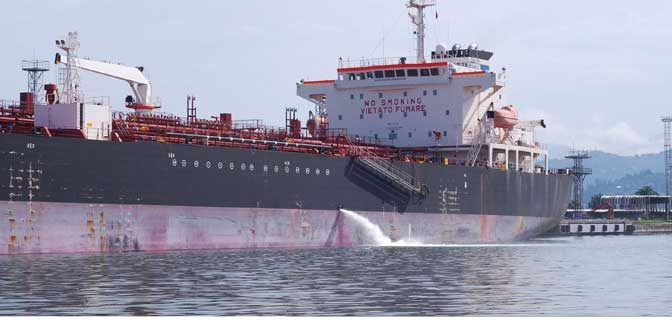A new draft policy letter issued by USCG last week, concerning viability testing in BWMS under VIDA, is breaching the VIDA text asking for “best available science” by not accepting the Most Probable Number (MPN) method, argued Jad Mouawad, CEO, Mouawad Consulting.
The US Coast Guard has released a draft policy letter on evaluation of methods that allow the enumeration of organisms using nonviable-organism testing protocols for ballast water management systems (BWMS), as required by the Vessel Incidental Discharge Act (VIDA).
Nonviable-organism testing protocols are particularly important for UV-based BWMS that rely mainly on rendering organisms unable to reproduce, effectively limiting their invasive risk and achieving the requirements of the BWM Convention and other local regulations. A very well established method, the Most Probable Number (MPN) method, has been used for a long period of time to make that assessment, and is accepted by the IMO as one of the methods valid for evaluation of efficacy of BWMS during type approval testing, and later during installation controls.
To date, the USCG does not accept MPN as a method to evaluate efficacy of BWMS during Type Approval testing; instead, it requires testing facilities to use staining methods, which require organisms to be effectively dead and not unable to reproduce, in order to check if the water treated by the BWMS manages to meet the D-2 standard or the US Ballast Water Discharge Standard (BWDS).
Industry´s expectations
VIDA required the USCG to evaluate BWMS using nonviable organisms testing protocols. And when VIDA passed, the industry expected the USCG to put forward the MPN method within its accepted methods and that by effectively end of 2019, testing facilities could start using this method for USCG Type Approval.
Why it is reasonable to expect the USCG to acknowledge MPN
For several years, an expert group from around the globe had been working under the umbrella of the US EPA (including the USCG), to evaluate the MPN as an acceptable method under the currently used ETV Protocol. The years long work and comparative testing in the foremost testing facilities in the world, led to a comprehensive dossier submitted to the EPA and the USCG, in support of using the MPN during evaluation of efficacy of BWMS.
In addition to the above, the IMO (in which the US is a member and the USCG leads key committees at the IMO), has discussed and approved the MPN based partly and substantially on the experiences of the “best of the best” in the world when it comes to testing of BWMS.
It is therefore very surprising to read the following in the draft policy letter proposed by the USCG:
“At the time of this publication, the Coast Guard does not know of any type-approval testing protocols for BWMS that render nonviable organisms in ballast water that are based on best available science. Therefore, this policy letter establishes the process developed by the Coast Guard for accepting type-approval testing protocols”.
What this draft policy letter effectively says
By not accepting the MPN method which is already approved by the IMO, the USCG in my view is clearly breaching the VIDA text asking for “best available science”. This is what this draft policy letter effectively says.
Clearly, if the testing facilities that the USCG has delegated testing to, announce to the USCG and the IMO that they recommend MPN, then this must be “best available science”.
Peer reviewed articles, in the 100s, on the MPN method date back decades and prominent professors in marine biology (American and others) have published multiple articles on the subject in recent years. If all this is not good enough, what is good enough?This
Practicalities of the “policy letter” approach
In practice, by the time the policy letter is published (December 2019?), it will take years before any nonviable-organism testing protocol is approved by the USCG. By that time, the vast majority of BWMS are type approved (a several US$ million exercise) and the intentions behind the text in VIDA not met.
What should have been done instead?
Since the USCG and the EPA have already a rigorous report presented to them by the vast majority of the current BWMS testing facilities, in favour of the MPN; this method should have been annexed to the draft policy letter as one acceptable method, and receive comments on that. Alternatively, the USCG could have just referred to the Circular of the IMO where accepted methods for type approval testing of BWMS are listed.
We expect the USCG to publish a similar circular to that of the IMO, where all accepted methods are listed in detail for public access, similar to the approach of the IMO.
The views presented hereabove are only those of the author and not necessarily those of SAFETY4SEA and are for information sharing and discussion purposes only.






























































